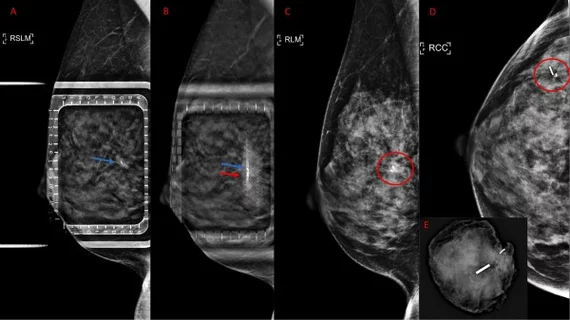DBT guidance produces a significant drop in procedure time during radioseed localization
Preoperative radioseed localization using a digital breast tomosynthesis guided method can reduce both procedure time and radiation dose.
That’s according to a recent study that compared the DBT-guided method (DBT-L) to standard 2D stereotactic-guided radioseed localization (SGL) prior to surgical excision of breast lesions.
The analysis consisted of 68 women who underwent DBT-L and 65 who underwent SGL between March and December of 2019. On average, DBT-L procedures lasted for approximately 8.3 minutes, while SGLs typically took around 10.3 minutes—a statistical difference of two minutes per procedure.
What’s more, the DBT-L method also reduced patients radiation exposure, dropping average organ doses from 10.4 mGy for SGL to 8.6 mGy.
The savings in time and radiation dose did not come at the expense of surgical outcomes. Experts found no statistical differences in the incidence of positive margins at surgery between the two methods, nor were there differences in complications.
To date, this is the largest single-center study to compare the two localization methods based on surgical outcomes, procedure time and organ-specific radiation doses.
The authors highlighted the importance of their study results amid the growing popularity of DBT as a screening tool.
“As the use of DBT continues to intensify, given the proven screening and diagnostic benefits, DBT-guided localization will be needed for lesions that may be less apparent or occult on standard 2D mammography,” corresponding author Molly Hogan, of the Department of Radiology at Memorial Sloan Kettering Cancer Center, and colleagues indicated.
The authors acknowledged that DBT localization may not be appropriate in all scenarios based on its availability and radiologists’ preferences but maintained that it is a suitable alternative with positive benefits when feasible.
The study abstract is available in Clinical Imaging.

